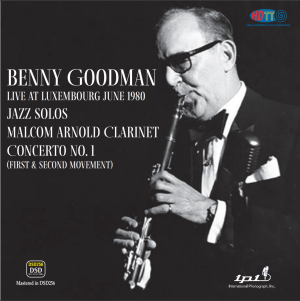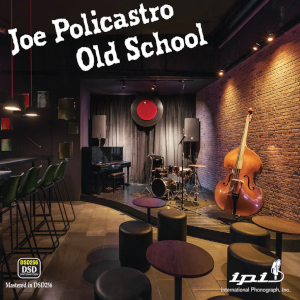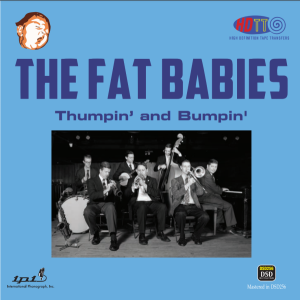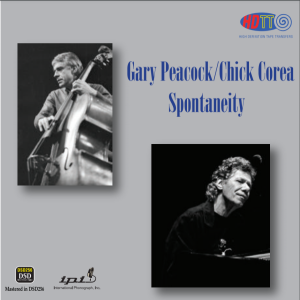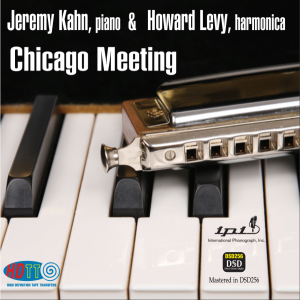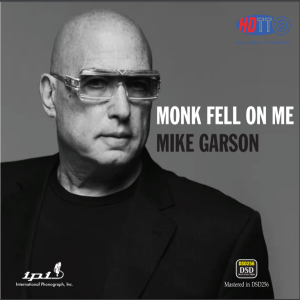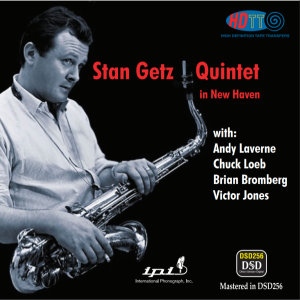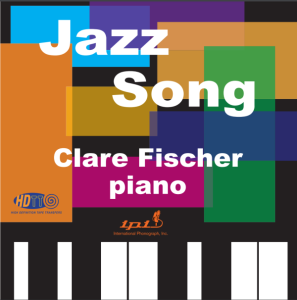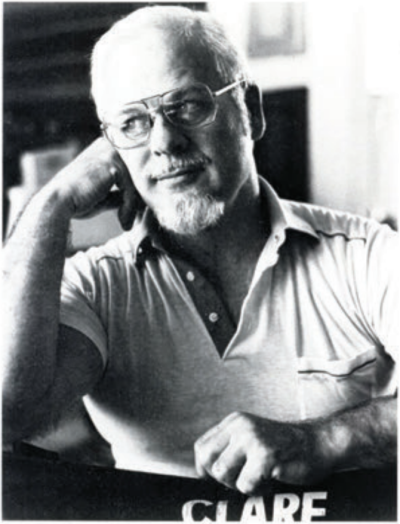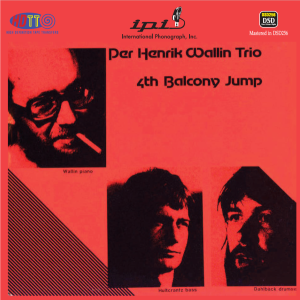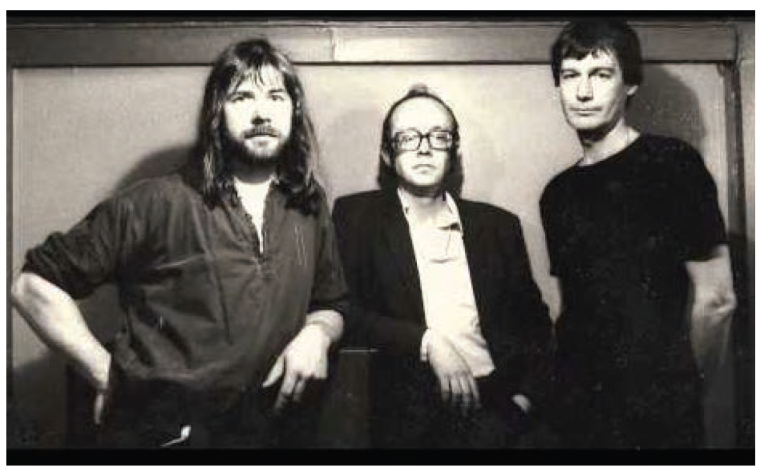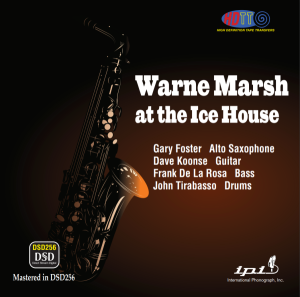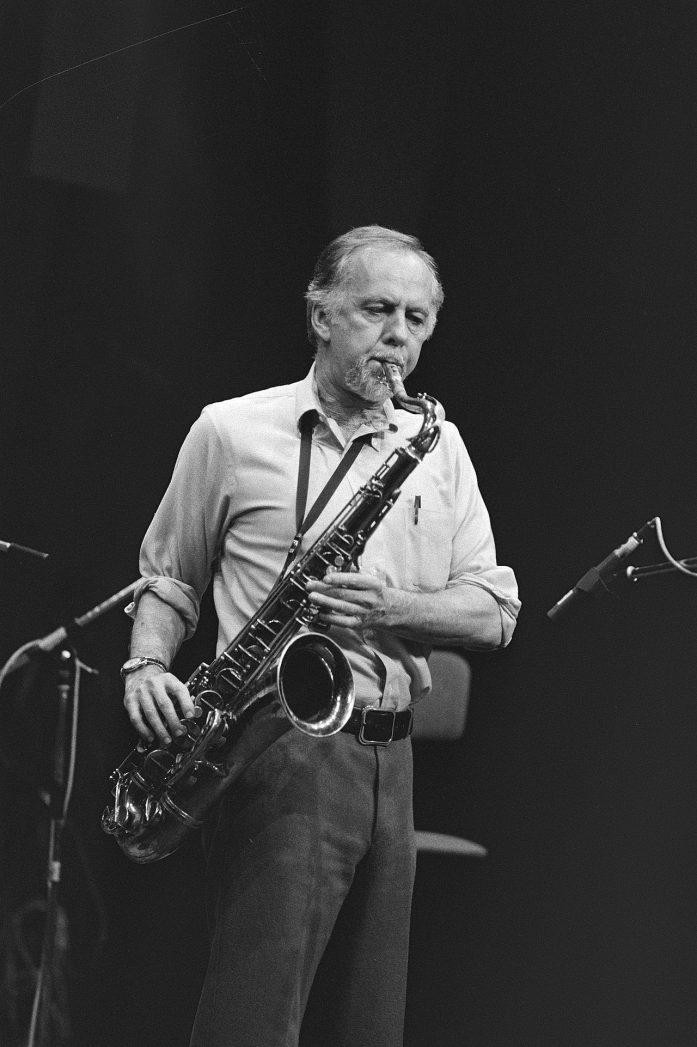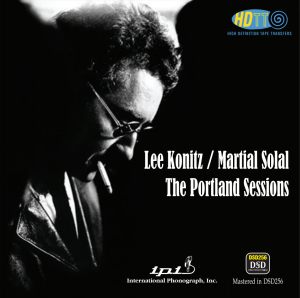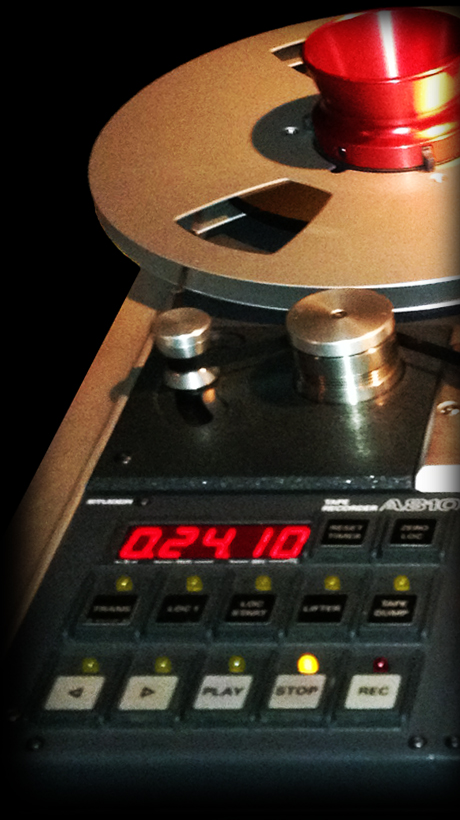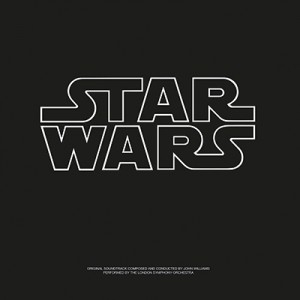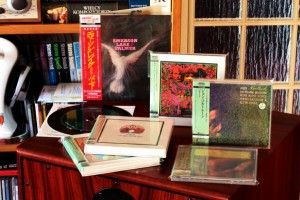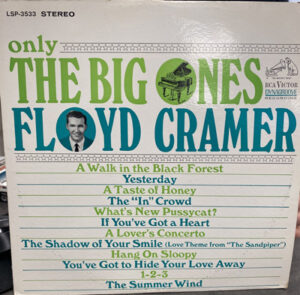Over the past 40 years, Jonathan Horwich has been making very high resolution reel-to-reel tape recordings of live jazz concerts. He works out of the Chicago area, but travels quite broadly to capture these performances. Wherever he can get permission to set up his microphones and reel-to-reel tape deck (15 or 30ips, 2-track), he's likely to be there.
Some of the artists he's recorded over the years will be unknown beyond the region in which they regularly performed; others are internationally recognized (e.g., Benny Goodman, Chet Baker, Chick Corea, Stan Getz, Clare Fischer, Joe Pass, Lee Konitz, Ravi Shankar…). But whether known or unknown, the performances are usually quite excellent as is the sound of the recordings.
Though his company, International Phonograph Inc. (IPI), Jonathan has made his recordings available on 10.5 inch analog tape reels for those interested in the highest quality reproduction possible of outstanding jazz. And he continues to do so. On his website. he explains, "International Phonograph Inc. was started in 1981 with the sole intention of recording and producing great jazz, at the highest sound quality, while supporting deserving musicians who forward this original American art form."
A few years ago, Jonathan and Bob Witrak decided to collaborate. Jonathan makes the Pure DSD256 transfers from his master tapes and sends the files to Bob for listing on the HDTT site. I've been able to listen to some of the one-to-one tape copies of his master tapes and they are indeed very special. These DSD256 transfers don't leave anything to be desired compared to what I recall hearing from those tapes. Both those tape dubs and these DSD256 transfers are simply amazing. Let me introduce you to some below.
Benny Goodman Live at Luxembourg, June 1980. HDTT/IPI 1980, 2022 (Pure DSD256) HERE
This is an insanely great concert and recording. The solo sets by are just insanely wonderful, innovative, cheekily provocative. And the recording by Jonathan Horwich, IPI, captures it all with great transparency, dynamics and detail. The opening cut, “Fragments of The Music Goes Round and Round into Oh, Lady Be Good,” sets the standard and the concert just gets better and better. You’d think this was a studio recording except for the audience reactions at the end of each cut, and occasionally interspersed as Goodman has some fun with them. The background is silkily black, Goodman is front and center on the solo sets with big tone, volume and subtle dynamics. It’s a shame Jonathan Horwich ran out of tape before being able to complete the last movement of the Malcolm Arnold Clarinet Concerto…it was sooo good in the first two movements. Such a loss. But running tape at 30ips has to be a huge challenge in time management. With a live performance it must be about impossible. In Pure DSD256, this is a marvelous transfer and a tremendous gift to have this concert. What a great musician and performer!
Recorded live to 30ips 2-track tape in 1980 and transferred to Pure DSD256. This is another sonic wonder from IPI via HDTT. Highly recommended.
Joe Policastro, Old School. HDTT/IPI 2022 (Pure DSD256) HERE
John Horwich does it again with this excellent new analog recording on his IPI label. Transferred to Pure DSD256 for release by HDTT, what we have here is what I believe to be a perfect copy of what's on John's magnificent analog tape.
Joe Policastro's Trio plays gloriously alive and infectious old-school jazz on this album. Just sit back, relax and soak it in as your toes tap and head bobs. As stated in the booklet notes, "This is old-school music and analog sound at its best." Indeed it is!
And don't miss these three additional albums by Joe Policastro. Each has a different complement of players joining Policastro and the vibe captured in each is different, with Policastoro providing overall continuity. I wouldn't begin to prefer one over another because the performances are all of very high quality, and Jonathan Horwich's recorded sound quality is consistently excellent in these Pure DSD256 transfers from his 15ips master tapes.
The Fat Babies, Thumpin’ and Bumpin'. HDTT/IPI 2017, 2019 (Pure DSD256) HERE
From the liner notes: "Groups that play early-period (pre-World War II) jazz are very rare. Even rarer still are groups that can do so competently and convincingly. The Fat Babies are the real deal. Consisting of an eight-member jazz band, they enthusiastically embrace the music of the pre bebop era (pre Charlie Parker and Dizzy Gillespie) and do so with drive, energy, and muscle. Their love for the music of this period in jazz manifests itself in a buoyant and uplifting energy that is absolutely infectious."
This description from the liner notes exactly captures my thoughts about this recording which I've enjoyed since it's original release. The music and performances are "absolutely infectious." The sound quality is superb. I've heard a 15ips tape copy from the master tape at a friend's home on his wonderful ATR Ampex, and this DSD256 transfer sounds every bit as good as my memory of that tape playback.
This album is one of those joys for which we build our audio systems!
Spontaneity, Chick Corea, piano & Gary Peacock, double bass. HDTT/IPI 1979, 2021 (Pure DSD256) HERE
About this recording, Jonathan Horwich writes, "Two of my favorite musicians are Gary Peacock (acoustic bass) and Chick Corea (acoustic piano). I was lucky enough to record them both in a duet setting with Chick playing the wonderful Mark Allen piano in a lovely acoustic environment. The playing here is modern and free, hence the title. At certain moments it is extraordinary. It is always unfettered and adventurous. Sonically, it was captured on the incredible Stellavox, Stellamaster SP8 tape recorder using only two B&K microphones lending a natural, open sound to the proceedings. As an added note, not long after this session Miles Davis discovered Gary and he spent a year playing with Miles (they never recorded unfortunately). Soon after that Gary achieved lasting fame playing with Keith Jarrett and his trio."
What more can I say? Eminently enjoyable, relaxed, free flowing, improvised jazz by two great musicians. The sound is open, clear, with excellent resolution of timbre, and excellent dynamics. It's a good 'un.
Chicago Meeting, Jeremy Kahn, piano & Howard Levy, harmonica. HDTT/IPI 2015, 2020 (Pure DSD256) HERE
Around 1992 I had the pleasure of hearing multiple Grammy Award winner Howard Levy in a recording session with a small group of folk/jazz musicians. They'd convinced him to come down from the Chicago area to join them on two tracks of the album they were recording. I'd never heard such amazing musicianship with a mouth harp before. And his contribution was entirely improvised, as far as I ever learned. Since then I've been a huge fan of his work.
This album with Jeremy Kahn is a great example of Levy's work and it's beautifully recorded. The miking is minimal, giving a very natural perspective to the music. Levy is front and center, Kahn a bit further back in the mix. The two make for a very nice partnership as they work their way through some nice tunes.
Monk Fell on Me, Mike Garson. HDTT/IPI 2013, 2017 (Pure DSD256) HERE
Mike Garson (b. 1945) is an American jazz pianist and composer with an impressive list of recordings and musical activities. I first encountered his music making on the album Serendipity which he recorded for Reference Recording in 1986. And then Oxnard Sessions (Volumes I & II) in 1990 and 1993. I've kept my ears open for his sound ever since. In this recording, he channels Thelonious Monk. And Monk's spirit is clearly in the room when this album plays, but the playing is totally Mike Garson.
Recorded by Jonathan Horwich in 2013 to 15ips 2-track tape using two vintage Neuman U67 microphones, then transferred from the master tapes to DSD256 for release by HDTT.
Stan Getz Quintet in New Haven. HDTT/IPI 1980, 2018 (Pure DSD256) HERE
Stan Getz was always an adventurous artist, willing to take risks, noted for exploring different style. He is most often associated with his famous album Getz/Gilbrato (a 1963 collaboration with Antonio Carlos Jobim and João Gilberto) that was his biggest seller, thanks in large part to "The Girl from Ipanema" (featuring the vocals of Astrud and João Gilberto). But Getz did not stay with bossa nova, instead choosing to de-emphasize it and pursue more challenging jazz. And it is in this more challenging jazz that we hear him in this live 1980 performance at The Educational Center For The Arts in New Haven, Connecticut. Jonathan Horwich originally captured this with just 2-microphones onto 30ips tape. This release is a DSD256 transfer by Jonathan from the final 15ips edit master tape. The sound quality is as good as it gets.
Clare Fischer, Jazz Song. HDTT/IPI 1973, 2016 (DXD, DSD128) HERE
Clare Fischer (1928 - 2012) was an American keyboardist, composer, arranger, and bandleader. He was the pianist and arranger for the vocal group the Hi-Lo's in the late 1950s and went on to work with Donald Byrd and Dizzy Gillespie. Consistently cited by jazz pianist and composer Herbie Hancock as a major influence ("I wouldn't be me without Clare Fischer"), he was nominated for eleven Grammy Awards during his lifetime, winning for his landmark album, 2+2 (1981).
This album was recorded by Jonathan Horwich in Clare's living room on his personal piano using just two microphones and the legendary Stellavox SP 7 tape recorder. The result is simple unaltered sound and brilliant piano playing.
Of the session, Jonathan writes: "Covering both standards and originals, it captures a true genius of jazz at the height of his playing powers and what made him so unique. Here we find Clare at his most reflective, probing the rich, deep harmonies inherent in each song. Each performance is unrehearsed and is the first and only take, creating a wholly natural and unadorned sequence."
Clare Fischer portrait, courtesy IPI
Per Henrik Wallin Trio, 4th Balcony Jump. HDTT/IPI 1983, 2017 (Pure DSD256) HERE
Per the album notes by Jonathan Horwich, "4th Balcony Jump represents original and exploratory piano playing by a then unrecognized but deserving Swedish talent who was widely acclaimed in Europe but lesser known in the United States. That is a shame because Per Henrik Wallin was a master of textures, using both the bold and the feathery to impart his ideas. With his distinctive classical efficiency and architecture, Wallin sounds like himself but with just enough hints of Monk, Jarrett and Paul Bley to create a fascinating mix of power and distinction. For those into original, boldly different piano playing, this trio outing from 1983 is the ticket."
I was completely engaged with this album and found it that perfect blend of innovation that is most compelling about modern jazz. For those who complain that the Swedes can't play jazz, introduce them to this album!
Transferred to Pure DSD256 from the 15ips master tape.
L-R: Erik Dahlbäck, drums, Per Henrik Wallin, piano, and Torbjörn Hultcrantz, bass
Schubert Impromptus Op. 90 and Op. 142, Winston Choi, piano. HDTT/IPI 2017 (Pure DSD256) HERE
Okay, these are not jazz. But I've included them for the excellent performances and the beyond excellent sound engineering. Jonathan Horwich says that the recording was captured with just two microphones directly onto a two-track Sony APR 5003 tape recorder at 15ips. Microphones were two Sanken omni directional, CO-100Ks placed 6 feet in front of the Steinway 7 foot concert grand. The 15ips master tape was transferred to DSD256 for release at HDTT.
Canadian pianist Winston Choi's performances are very nice, very enjoyable. Because of the simplicity of the recording chain, the sound is transparent, capturing both the nuance and power of the performance. Due to the time constraint of one reel of tape (30 minutes), Mr. Choi is heard performing Impromptus Nos. 1-3 of the Op. 142, with No. 4 being omitted. For the Op. 90, all four impromptus are included and were played straight through by Mr. Choi for the recording, no breaks.
Now, what would be a real treat? It would be for Jonathan Horwich to record Winston Choi in some of the modern repertoire for which he is so well known in his other recordings.
Winston Choi (b.1977) is Associate Professor of Piano and the Head of the Piano Program at Roosevelt University's Chicago College of Performing Arts. His professional career was launched when he was named Laureate of the 2003 Honens Piano Competition and winner of France’s Concours International de Piano 20e siècle d’Orléans in 2002. As a dedicated champion of contemporary music, Choi has premiered and commissioned over 100 works by young composers as well as established masters. A prolific recording artist, Choi’s debut CD, the complete piano works of Elliott Carter (l’Empreinte Digitale in France) was given 5 stars by BBC Music Magazine. He maintains an active international performing schedule in which he has appeared with l’Orchestre National de Lille, l’Orchestre Symphonique d’Orléans, the Calgary Philharmonic Orchestra, the Victoria Symphony Orchestra, the CBC Radio Orchestra, the Kitchener-Waterloo Symphony, the Kamloops Symphony Orchestra, the Cheyenne Symphony Orchestra, the Peninsula Music Festival Orchestra, La Orquesta Sinfónica Nacional de Colombia, the Fort Collins Symphony Orchestra, and the Kalistos Chamber Orchestra, among others.
Warne Marsh at the Ice House Pasadena. HDTT/IPI 2017 (Pure DSD256) HERE
From the liner notes, which I could not convey better so I quote it all for you: "In the annals of jazz, there are a few giants who have played so originally and so brilliantly they have become legends and deserve the title of genius. Warne Marsh is one of those. Although never achieving the popularity of someone like Getz, he is as brilliant a player as has ever touched the tenor saxophone and no one has played like him since. Marsh is highly cerebral and dry, playing long and complex improvisational lines in strict metric time, demanding the serious listener pay attention to hear the depth of his brilliance."
Recorded by John William Hardy live at the Ice House, and transferred from the 15ips master tape to DSD256 by Jonathan Horwich, "all the excitement of that live original performance is captured here. Although the original tape contains minor technical flaws, such as fade outs, both horns on one side, these in no way distract from the total experience of a true genius caught in top form."
Note: Distortions and some abrupt endings heard are on the original master tape.
Warne Marsh: Tenor Saxophone
Gary Foster: Alto Saxophone
Dave Koonse: Guitar
Frank De La Rosa: Bass
John Tirabasso: Drums
Warne Marsh (1927 - 1987) performing in Amsterdam, 1982. (Creative Commons)
The Portland Sessions, Lee Kontiz and Martial Solal. HDTT 1979, 2017 (Pure DSD256) HERE
It doesn't get much better than listening to Lee Kontiz and Martial Solal performing together. In this session, they are reading each other's minds as they react, support, suggest another path with the music. This is excellent musicianship in creative, enjoyable performances. The sound quality is "top of the pile" excellent. Nicely balanced, transparent and highly detailed. It's just magical.
The recording was made with a 30ips Studer ABO ML 5 (Mark Levinson Modifications) and 2 B&K omnidirectional microphones, the transfer by Jonathan is to Pure DSD256 from the 15ips master tape. Jonathan says about this recording, Fortuitously, I captured the performance on a Levinson/Studer ML5 30ips tape deck, with just two B&K omnidirectional instrument microphones, in a gorgeous hall on one of the greatest pianos ever built, the Mark Allen concert grand. After hearing this recording several times recently, I believe it embodies all that I have tried to achieve with jazz in concert with great audio. A musical and audio gem.
Jonathan Horwich's Studer A810 recorder used in many of his recordings.
For a current listing of the IPI digital transfers available at HDTT, see HERE.
For a current listing of the IPI reel-to-reel tape dubs directly from IPI, see HERE.





